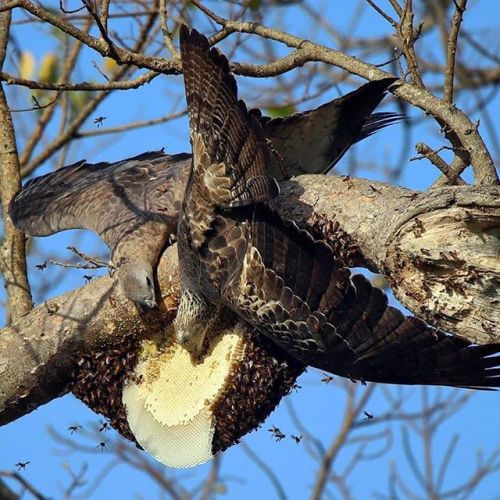EUROPEAN HONEY BUZZARD
Pernis apivorus
©joinus12345
I love coming across something I never knew existed, this is one of those times. This is a family of birds of prey, that are specialist feeders, living mainly on the larvae and nests of wasps and hornets (although it will take small mammals, reptiles, and birds as well).

ASIAN or CRESTED HONEY BUZZARD
Pernis ptilorhynchus
©IVM Sky Animals
This is the only known predator of the Asian giant hornet. It spends large amounts of time on the forest floor excavating wasp nests.
—
Family Adaptations: Honey Buzzards are equipped with long toes and claws that are straight and well adapted to raking, digging and walking, as well as scale-like feathering around the eyes and covering the head, thought to be a defense against the stings of its victims. Honey buzzards are thought to have a chemical deterrent in their feathers that protects them from wasp attack.
The similarity in plumage between juvenile European honey buzzard and
common buzzard may have arisen as a partial protection against predation
by northern goshawks.
Although the goshawk is capable of killing both species,
it’s likely to be more cautious about attacking the better protected actual buzzard species, with its stronger bill and talons. Similar Batesian mimicry is shown by the Asian Pernis species, which resemble the Spizaetus hawk-eagles.
Despite their family name, they are not buzzards, and prefer wasps and hornets to bees. There are four members including the European, Crested/Oriental, Barred, and Philippine Honey Buzzards

























